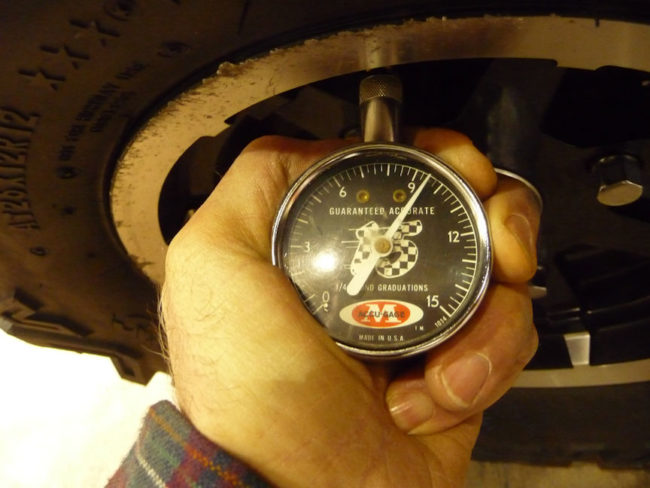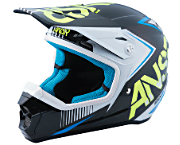© 2019 by Bill Uhl, ATV Expert Witness

If you care about All Terrain Vehicle (ATV), Utility Terrain Vehicle (UTV), Recreational Off-Highway Vehicle (ROV), or Off-Highway Vehicle (OHV) rider safety and you are an ROV owner / operator, tour company guide, tour company owner or other company or organization official, this is an important article for you to read. There are a multitude of reasons that an OHV Pre-Ride Inspection should follow relevant manufacturer guidelines, owner’s manuals and operator’s manuals. Caution can help you prevent All-Terrain Vehicle accidents, injuries and deaths.
OHV equipment has many moving parts that rub against each other. For perspective, think about the concept of “vehicle break-in.” Break-in is designed to ensure controlled wear out. Ideally, owners and operators will use diverse parts of a machine during the same time period. With proper break-in, ATV parts optimally work together with the least amount of drag / wear. They will gently wear in together, thereby avoiding hurting each other.
Please note how important it is for you to do a Pre-Ride Inspection before you use your OHV / ROV. Do this before each day’s ride with the goal of preventing an ATV accident or related injury. It’s also important to observe your vehicle during your riding day and to tell anyone you allow to operate your vehicle how important this is.
Your goal is to observe all of the parts of your ATV to make sure it is safe and in good working order. I do stress that you and anyone you permit to use your ATV ask for help if you are uncomfortable implementing my recommendations because you don’t understand mechanical things, especially machines as complicated as an OHV.
Safety decals on most ATVs direct operators to read the owner’s manual before operating the vehicle. Click here to discover more about preventing ATV accidents and injuries. It’s important to keep the owner’s manual with the vehicle at all times and to provide a new operator with the opportunity to read it. Notes:
- On many brands and models of ATVs, the manual is located in a pouch or compartment under the seat.
- Most manufacturers will replace safety decals at no charge to the owner if a decal becomes difficult to read.
Within the owner’s manuals, the reader will most likely find a list of what should be checked before each day’s ride and how to help each new operator ride safely. In case you think this is too often to check your OHV’s function, please note: During international and other competitions around the world, I checked my vehicles every time I was not actively riding them during daily events. I know this practice kept me safe because of the variety of unknown problems I discovered during my checks.
The list below is an example of a Pre-Ride Inspection Checklist.
- Do a preliminary walk around. Observe the complete ATV.
- Then zero in on the individual components.
- Wheels / fasteners. Check for lug nut tightness.
- Tires: Check both tire condition and tire pressure because this affects safety. Click here to learn more.
- Steering: Does it move correctly? Smoothly with no binding? Click here for more information.
- Check all nuts, bolts and fasteners for condition and tightness.
- Rear and front suspension: Check movement. Lubricate if needed.
- Brake system front and rear (if so equipped). Check for correct operation. Ask for help if you don’t know what that is.
- Auxiliary brake (if so equipped). Check for correct operation. Ask for help if you don’t understand what that means.
- Brake fluid. Check for correct levels for hydraulic brakes.
- Manual brakes. Check both front and rear. Make sure they are adjusted correctly so they will stop the vehicle.
- Fuel and oil. Check the levels.
- ADC fluid. Check the level.
- Coolant level. Make sure it is set at the correct level.
- Coolant hoses. Check for signs of leaks.
- Brake light /tail light. Make sure both are working.
- Make sure it works correctly.
- Throttle: Does it return quickly and smoothly?
- Engine stop switch. Know where it is. Check to make sure it’s working.
- Indicator lights and switches (if so equipped). Ensure they are operating well.
- Air filter, pre-filter: Inspect. Clean if necessary.
- Riding gear. Always wear approved helmet, eye protection, and protective clothing.
Go through the above list. Imagine the problems that can occur if each particular part or component is not in its correct working order. You’ll notice why manufacturers tell you to correct problems before they become dangerous to both the operator and the people they’re riding close to. I cannot over-stress how important this process is, so you can prevent an ATV accident or injury. Examples:
- What could happen if your rear brake fails when you least expect that, like while you’re diving into a corner at a considerable rate of speed?
- When you try to use the auxiliary brake that you never or seldom use, what if it has rusted in place and won’t work?
- What could happen if your throttle fails to return when you let up on it as you drive into a corner? Are your reflexes fast enough to hit the kill button that you normally don’t use and therefore you haven’t developed a reflex to activate without first panicking or having to stop and ask yourself, “What should I do?”
- What could happen if your wheel lug nuts come loose on one of your front wheels as you’re traveling down a gravel road at a good clip?
- What could happen if one of your front suspension shock bolts falls out just as you leave the ground from a small mound and your ROV becomes airborne upon your landing?
- What could happen if one of your front tires starts to lose part of its air? Note: The tire only holds 5.5 lb. of air on some ATVs. When you answer this question, assume you’re going down a steep hill and have to make a left-hand corner at the bottom with no run out. Also assume that the low tire is on the right front, downhill side.
- What could happen if you’re far from base camp and it’s getting late? Assume you’re the last one in your group. Other machine operators have left you behind, excited to return to camp. In fact, they took off right before your seeping radiator hose decided to let go. Hot coolant sprayed all over you and burned parts of your body. You’re hurt and stranded all by yourself.
- What could happen if your ATV’s air filter wasn’t checked all summer long? You normally ride in the middle of a group. You know how far you can usually travel on a tank of gas. When you least expect it, your vehicle stops running. Even worse, the rider behind you almost runs into the back of your ATV. Why?
- How can wearing proper riding gear help you prevent an OHV accident, injury or death?
Please carefully consider what you’ve read in this article. Any one of the failures above can result in grave dangers to an OHV operator. ATV accidents can lead to severe personal injury or death as well as damage to your OHV, other riders and bystanders.
NOTE: This article is not intended to be all inclusive. It is designed to provide a foundation for the reader to learn from.
Bill Uhl is a Safety Trainer and Court-Qualified Expert Witness for cases involving all-terrain vehicles (ATVs), utility vehicles (UTVs / side by sides), ROVs, OHVs, snowmobiles, motorcycle dirt bikes, dual sport bikes and off-road bicycles. Uhl has completed over 75 cases while serving as an Expert Witness, including trial testimony. Click here now for more information about Mr. Uhl.


